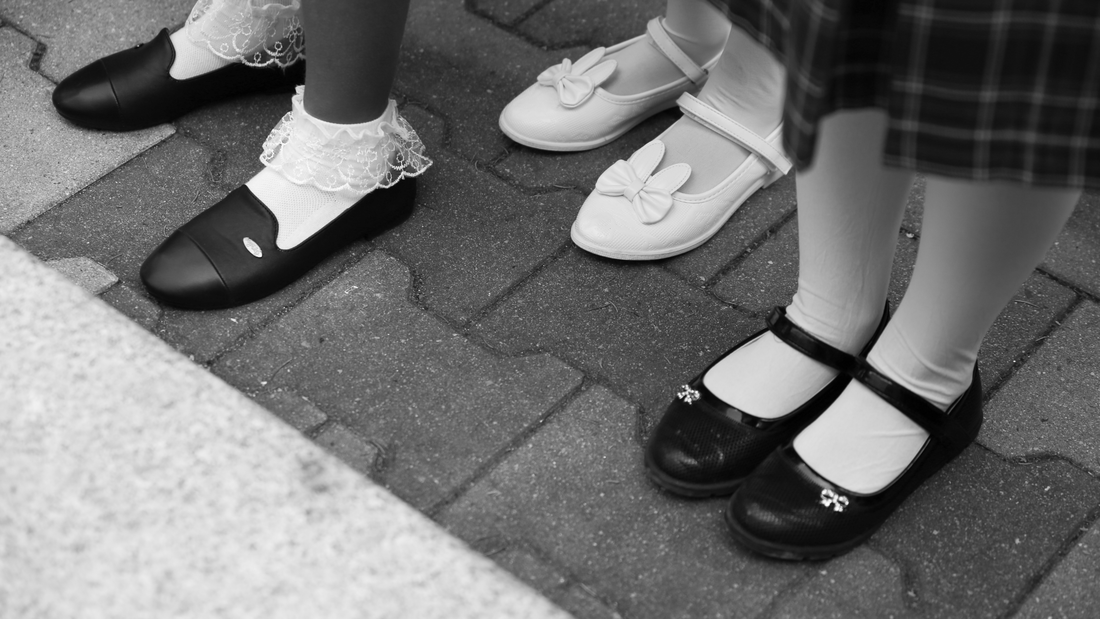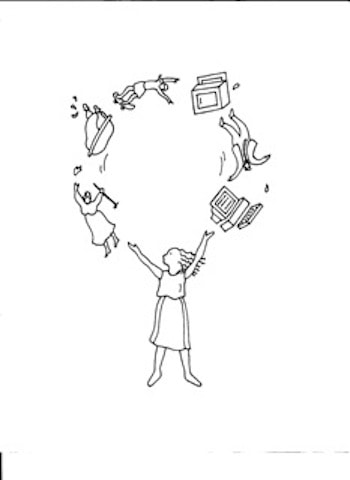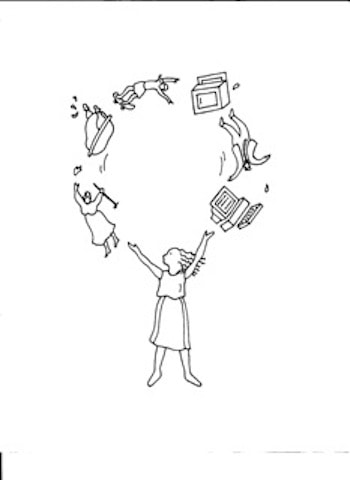|
IMy perspective on Covid is drawn from an early childhood experience with Polio. I believe it holds the key to unwinding the political binding that is strangling our vaccination effort.
It was summer, school was out and my sister and I could hardly wait to play with our friends. I already knew there was a sickness that children got and it made them so they couldn’t run and play. That seemed like the end of the world to me! Every day the radio reported the latest number of children with Polio and the number of deaths. After a week or so, my mother announced that we were “going to stay home and make things”. That seemed odd. We made all kinds of things; I learned to sew that summer. When I asked if Olivia could join us, Mom refused. Mom told us that Olivia was away on vacation. Later, I saw her mother driving their car. Olivia must be home again. Still Mom refused to allow her to come. She also refused any other children to come. Mom seemed worried all the time; I didn’t understand why. I thought I had done something SO horrible that she wouldn’t talk about it! Finally, I asked to go see Olivia at her house; Mom got really, really upset. I couldn’t make any sense of her reaction; what had I done? Did I do something to Olivia? My curiosity got the better of me. While my mother was putting my sister down for her nap, I left the house anyway! When I knocked on Olivia’s door, her mother answered. She seemed startled to see me. I asked to see Olivia but her mother replied; “is it OK with your mother?” “Yes”, I lied. She left me standing on the front stoop while she went into the dining room. Olivia didn’t come to the door. Instead, I heard a sound: whoosh, whiish, whoosh, whiish. It sounded like a giant breathing. Eventually, Olivia’s mother came to the door and invited me into their dining room. All the dining furniture was gone. In its place was a giant machine that wrapped itself around Olivia like a tin can: only her head showed. Olivia turned her head (sort of) and greeted me. I couldn’t speak. She tried to explain that she had gotten Polio. I still couldn’t make a sound. I don’t remember exactly what I did next. Eventually, I found myself sitting on the curb about midway between her house and ours. I have no idea how long I sat there. Eventually Mom must have come looking for me. She bent down and looked intently into my eyes. I still couldn’t talk. Her facial expression was the same as the time my sister had been bitten by a dog. Mom gathered me up and took me home. She looked me over physically. Seeing no injuries, she gave me a pill and put me to bed. That whole experience was buried deep in my mind; until Covid. During the first lockdown, I was awakened by the sound: Whoosh, whiish, whoosh, whiish. I got up and checked the furnace, no noise like that. It happened for several nights; I checked the windows and the plastic sheeting over the glass which sealed out air leaks. I found no “cause”. Finally, Olivia greeted me one night and I realized where I had heard that noise! My encounter with Polio had come back to me! Shortly after that summer, the radio announced the “Salt” vaccine. Mom corrected me, it was the Salk vaccine. The school gymnasium filled with children and their mothers. We were lined up, given the shot, and a card. I didn’t like shots. Mom looked elated! She took us out for a chocolate soda to celebrate. Celebrating seemed an odd way to respond to a shot. Olivia’s family moved away. The next year we moved. Only later did I learn that the shot I received was to prevent me from getting that sickness so children couldn’t run and play. Based on this experience, I suggest the following methods to refocus on Covid as a disease PERIOD. Polio and the concept of prevention through vaccine remained PRESENT to me because of that (buried) experience. Covid isn’t real for some people because it’s not present. Bubonic Plague left bodies in the streets. The 1918 Flu pandemic left people dying at everywhere. Nurses and doctors saw Covid effects. Those who tried to care for loved ones at home saw Covid up front. Covid isn’t visible to the general public when most patients are whisked away by ambulance, and sequestered in ICUs. WE NEED TO MAKE IT VISIBLE. Children who suffered from Polio came home in wheel chairs, crutches and iron lungs. They represented the effects of a dread disease. Long haul Covid sufferers don’t have appliances. They have memory loss and trouble breathing. That’s harder to see. We NEED TO MAKE VISIBLE THE EFFECTS OF COVID IN THOSE WHO HAVE RECOVERED. When I was born, there was only the Small pox vaccine. I remember grownups with a scarred circle on their upper (usually left) arm; their vaccine site. Bringing up a child was no walk in the park; whooping cough, measles, mumps, chickenpox, diphtheria and polio were only some of the hazards of childhood. Generations of parents spent sleepless nights in prayer beside children’s beds. They rejoiced at each vaccine because they had witnessed the alternative. Each vaccine removed the presence of an illness but it also broke the connection with lived experience. WE NEED TO REBUILD THAT BRIDGE. We need to reconnect to dots for those whose lived experience can’t teach them about such consequences. Covid -first wave was real. Covid Variant is also real WE NEED TO MAKE IT IMPORTANT ENOUGH. Who is important enough to make a difference in our response? When HIV-AIDs developed it only affected gay men. It was first called gay cancer. Some believed it was the judgment of G-d and should be left alone. Then HIV jumped to heterosexual people; it became important. We now have treatments. At first, Covid only took the lives of elderly people in nursing homes. The deaths of younger people in the first variant wave made some realize that a-n-y-o-n-e could die from Covid. Do the right people have to suffer before we take this seriously? Now is it important enough? This will not be our last plague or pandemic. What changes we make in society’s communication methods now, will decide if we surmount the next two SARS Covid-19 variants. Technology may give us wonderful vaccines, but these will be useless if we leave them on the table due to misinformation. Thank you Olivia, your life and death were not in vain. You showed me consequences and I am grateful for your gift.
0 Comments
Age is a stage of life, not a diagnosis. Sadly, some seniors think is a diagnosis. Seniors may accept pain or changes in their bodies as “just getting old”. Pain is a symptom. It’s our body’s way of telling us (at any age) that something isn’t working. Please take your senior’s complaints seriously, even if all they say is; “I don’t feel good.” That complaint is a place to start. Repeated complaints indicate a persistent problem. I use three points to examine complaints: frequency, intensity, and duration. How often do they complain? How long have they complained? Do they report things are worse or better than earlier? Doctors analyze these kinds of information to help them decide what questions to ask next. Please complain; it’s helpful.
Some seniors believe they shouldn’t complain. You may need to explain to them that this is a report on their health rather than an annoyance. Some seniors complain without words. Does the face contort? Does the voice tighten? Do they seem more irritable at certain times of the day? Something’s going on. Ask them to please complain to you out loud. Earlier this year I knew something was “off” within me. I went to the doctor but the lab tests were inclusive. Nevertheless, I persisted. I tracked what I felt and when. I brought this information back to the doctor and insisted on considering other options. Eventually my pattern was clear enough to prompt the doctor to ask other questions. I received a new medication and it worked! I complained, but really I was advocating for myself. Some seniors cannot self-advocate. That’s why caregivers are so important. Please persist if the first treatment doesn’t work. Please complain for them. By the way; this is a portion of my course; Preparing to Parent Your Parent. Senior Sidekicks can bring this course to your church at a time convenient to you. Imagine you’re sitting quietly in a meeting or religious services; suddenly your heart starts pounding. You feel like your blood is coursing through the veins in your arms and legs. It’s bewildering and scary: Why?! There is nothing about this setting that calls for such a reaction. Yet, you have this reaction. It is important that caregivers understand what leads to this reaction and what they can do about it.
It’s a “fight or flight response gone wrong. It developed when we had to run away from Saber Tooth Tigers. Our ancestors were successful, that’s why we’re here. Those ancestors passed down to us their methods of coping with their world. Our modern world doesn’t have the same kinds of stressors, especially for caregivers. Our stressors are less clearly defined And they last longer. Our stressors change shape; one minute we’re dealing with the house-the spouse-the kids-and-the job. Then there’s a crisis and we’re caregivers for Mom! From that point forward, our caregiving increases but with no way to know when the need will become greater or how long caregiving will last. Our bodies respond as our ancestors’ once did; we produce Cortisol to rise to this crisis. The process goes like this: Stress causes the Hypothalamus to secrete. That triggers the Pituitary Gland to secrete. The Adrenal gland secretes Cortisol. This process has several names: HPA Axis, HPA Cascade or Syndrome X, or AKA Insulin Resistive Syndrome. (Wouldn’t it be helpful if we could all agree on one name?) It’s not the crisis that’s the problem. It’s the crisis that doesn’t end that creates bad effects on caregivers. The effects show up in different ways. Cortisol encourages promotes fat deposits in the outer layer of the body, especially the waist. Some caregivers gain weight. We can measure this effect by doing a BMI (Body Mass Index). Other caregivers have different conditions; heart disease, Type-2 Diabetes and Stroke. We can measure Cholesterol levels through a C-Reactive Protein lab test. We can also do a cheek swab to check Cortisol level. However, how many doctors don’t even ask patients if they are caregivers. The tests are there but they are not used to evaluate identified caregivers at this time on a general basis. You need to ask for them. When our bodies rise to meet a crisis: they must also let down. Even Saber Tooth Tigers would give chase and then give up. The caregiver’s duties do not end the same way. In fact, they do not “end” unless we place some “ending points” into the caregiver’s life. That is the role of self care, to provide end points such as respite and small moments. That’s why it’s necessary to spread the caregiving load so it doesn’t fall on one person. That is why we need to enlist family to give caregivers this kind of support. Otherwise, the caregiver can be sitting quietly in religious services and the Cortisol response “alarms” for no exterior reason. We need to advocate for caregivers to be recognized in the medical arena. Learn more by taking our course; Preparing to Parent Your Parent. |
Author "A Senior Moment" is written by Ms. Sara Lieber, owner of Senior Sidekicks. Ms. Lieber has over 30 years of experience in senior care. Archives
March 2024
Categories
All
|




 RSS Feed
RSS Feed